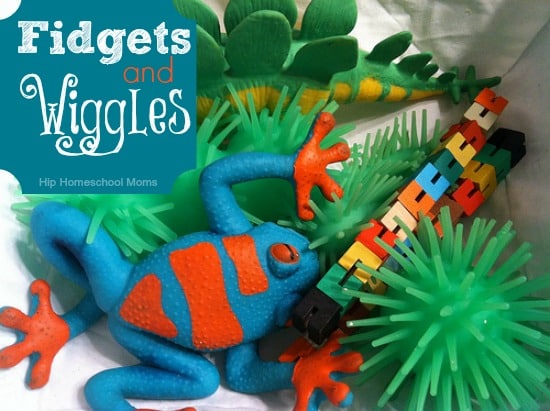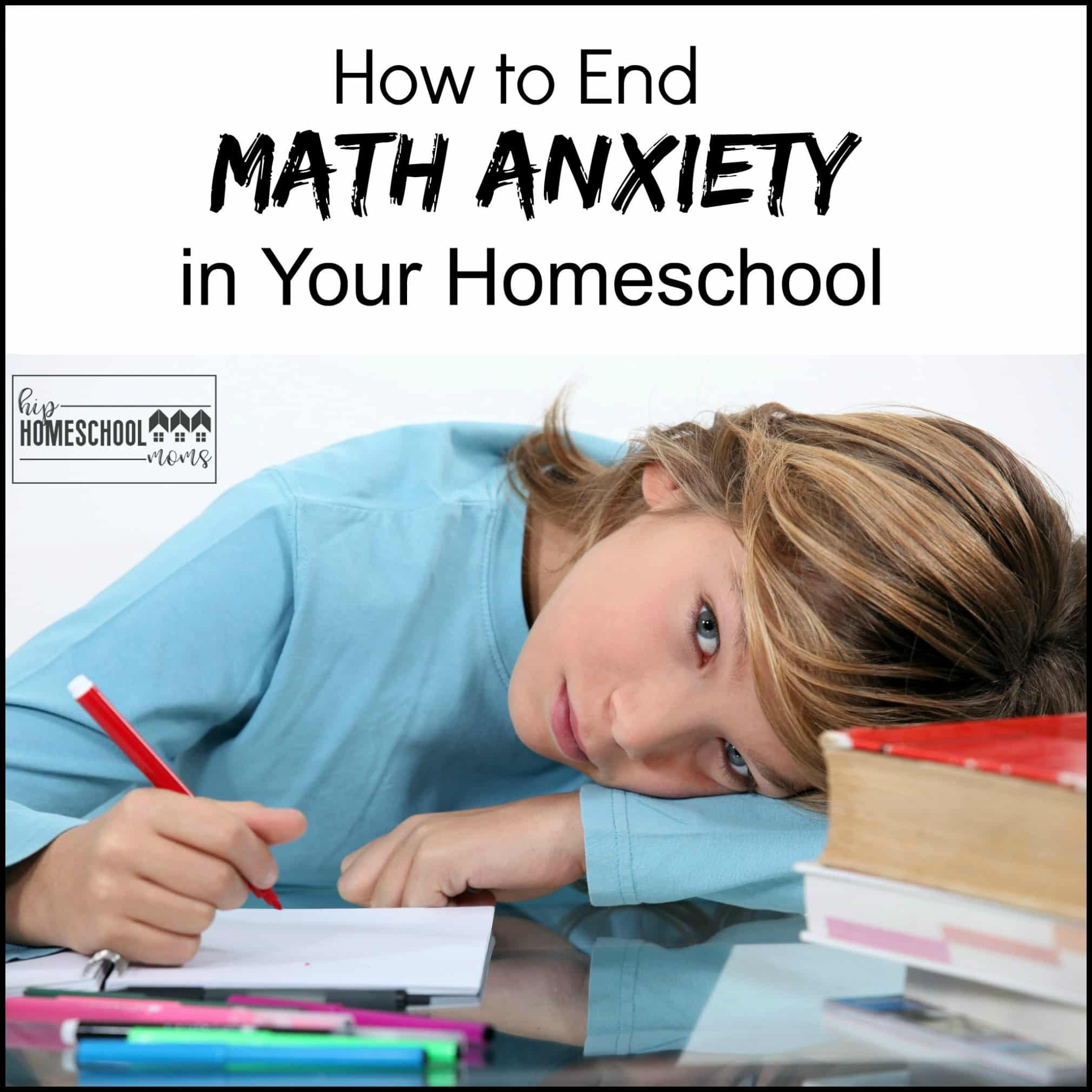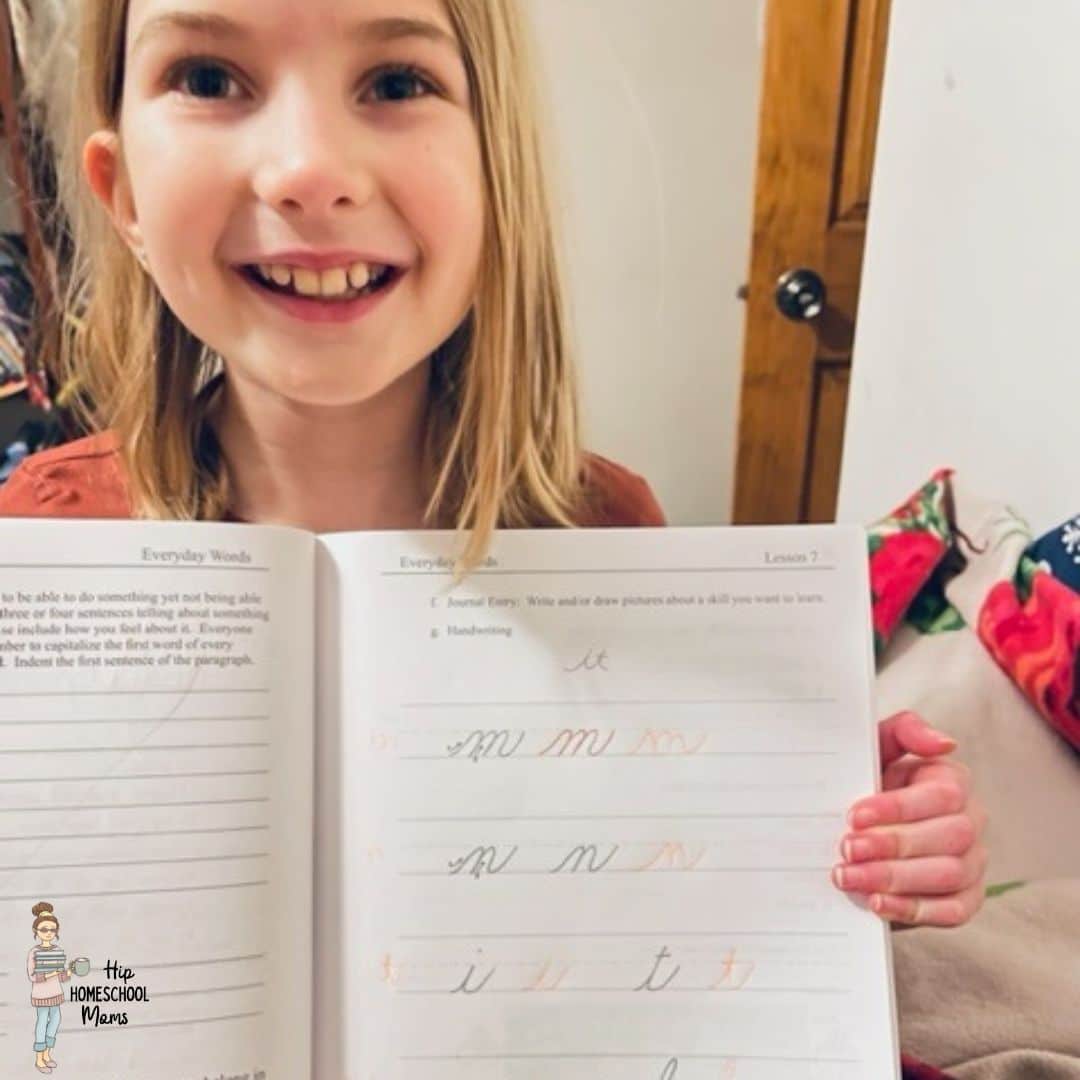Teaching Kids with Fidgets and Wiggles
All kids are different. All it takes is to observe a group of children at the park, a playgroup, etc. to know this. As parents, we know that some children do things differently or learn things differently, and that’s ok. As the mom of a little boy with sensory processing disorder, I have had to learn to sometimes do things, well … a bit differently.

One of the biggest challenges in our homeschool is one that many of you face as well: getting the kids to concentrate, focus, and not run around the house wearing the laundry basket on their heads while fighting dragons … ok maybe that last part only happens at my house, but I digress. 😉
Today I want to share with you some of the things that have helped us to subdue the wiggles and fidgets to give us a little more class time. If you have something that works for you, please share!! We can always use new ideas!
- If you have a hard time keeping the kids at the table, a visual schedule may come in handy. Be sure to schedule time away from the table frequently as a reward for doing well.
- For those kids always in motion, try replacing their normal chairs with an exercise ball. This will allow them to gently bounce and move a bit while still keeping their concentration on their work. I seriously have thought of replacing my desk chair with one of these!
- Sometimes having something in a child’s hand for them to fidget with can make or break story time. We have a basket with a few small toys that are ONLY to be played with during school, and they must be played with silently. The toys don’t have to be any specific make or model, some of the most popular ones in our house are squishy dinosaurs and animal shaped stress balls from the Dollar Spot, Tangle Puzzle, and the wooden puzzle fidget seen in the picture above.
- Another idea for keeping the hands busy during a time when you don’t necessarily need their visual attention is to let them draw on a Boogie Board quietly. You could even incorporate this into the lesson plan by letting them draw/color a picture.
- Or build a model of something relevant to the topic being studied using Legos, although sometimes they are not so quiet!

I hope that these will help your homeschool day flow a little better! Feel free to share any additional ideas, we are always on the lookout for new things!









My son is the original wiggle worm.Hes always going off fighting Star Wars characters with his lightsaber.lol.So getting him to sit still and do his lessons is a real challenge sometimes.I try to hand tailor things we are learning about to things that interest him like animals,cowboys and the old west,and we’re currently learning about vocanoes now.Building the model one should be interesting !
My son has Asperger’s Syndrome, ADD/ADHD and some sensory issues as well (there may be more) and I use a lot of what you already covered. We have a ‘Sensory Box’ that contains things like a feather boa, squishy animals, light up balls, putty and some other items. I have also recently made ‘smelly’ bottles for him. His biggest thing is to smell things and it seems to calm, so after hearing from others about this idea, I went with it. I got some clean, unused medicine bottle from the pharmacy (FREE) and I puschased scented oils from Wal-Mart (where the difussers and candles are) for $2.00 a bottle I think. I placed cotton balls in the medicine bottles and put drops of the oils in each bottle. I did have to let my son pick the scents out first. There are some scents that I won’t be able to get like skunk and new tires, but this works.
I have a wiggle worm too with some sensory issues. Math is our biggest challenge. For multiplication, he loves when I put huge numbers on the floor and he can walk on the numbers as he skip counts to get the answer. I also change it up. Some days we write in the workbook, some days I put the problems on a white board or I make a game out of the math problems. Still a struggle, but the variety has helped a lot.
You have given some excellent tips here. I am going to try a few of them . I particularly like letting them build , giving them a toy to play with and taking time away from the desk. I will let you know how I get on. Now to find the toys!
Glad to have found your blog.
Nina
I have used all of your ideas already! I have 5 boys (4 that I am homeschooling) and fidgets are common! I have let them have small toys, sit on the exercise balls and do “active” breaks. We have a cup labeled “brain break” that has various movement activities varying from under a minute to 5 minutes long. When I can see they are all starting to lose focus we have a brain break! Some activities are dancing to one song, running in place and one of their favorites is the laundry chute run! We have a laundry chute and they are to pick one item to drop down the chute then they have to run downstairs and get their item and bring it to me as quickly as possible!
Thank you Julie! Great ideas. I feel encouraged to try some of them with my little wiggler.
Jane
I’ve learned to alternate our activities between active and sitting still as well as group and individual. This year I let go of the idea of all of us sitting quietly at the table doing our work. Now my kids (mainly the 1st and 3rd grader) scatter through the house. They lay/sit on the floor or their beds. Sometimes they choose to sit at the table. Another thing is standing at the table instead of sitting. For some reason my oldest prefers to stand while he’s working.
We are definitely kindred Spirits, ladies. My 4th grader has benefitted from sensory and fidget supports for many years. However, in traditional school settings, fidget tools were not allowed because they “distracted” the other students. That was a frustrating experience for all involved. In the home school we can use so many fidget tools. I’ve used old stretchy socks, and large rubber bands (the physical therapy type). I’ve placed them loosely around my girl’s ankles so she can concentrate the fidget tendencies onto one area rather than using her entire body! She used to squirm and fall out of seats and desks at traditional classrooms. Her efforts to keep the band around her ankles keeps her from falling out of her seat, but she still has the release she seeks. Don’t be afraid to take verbal lessons or memory recall games into the swimming ppol, if your little learner finds the water relaxing. The relaxing effect of the pool water, when it’s not busy, is so therapeutic. Have fun exploring and sharing! Thanks!
This is a great post and one that is dear to my heart!! I am a wiggler myself haha! My daughter can’t sit still for the life of her and it was hindering her learning tremendously. Now that we homeschool we do “brain breaks” through out the day. We start out our day with “brainercise” to get her body and brain going. She sits on a fitness ball and has 3 desks in our homeschool classroom so she can move around. Whenever I notice her getting bogged down we do a educational song and dance from youtube. Ahead of time I place youtube videos into folders in my youtube accounts based on what she is learning. If she needs a brain break I can quickly choose a video from my files and we dance to it and sing what she is learning about. It is a great way to get all those extra fun activities in and it keeps her brain going all day. She loves it!! We also do thinking skill activities everyday. She has a fidget toy she plays with while she reads. I love researching anything that helps with brain development and kids with the “wiggles”! Thank you for this post!!!
http://www.discoverykidzone.blogspot.com/